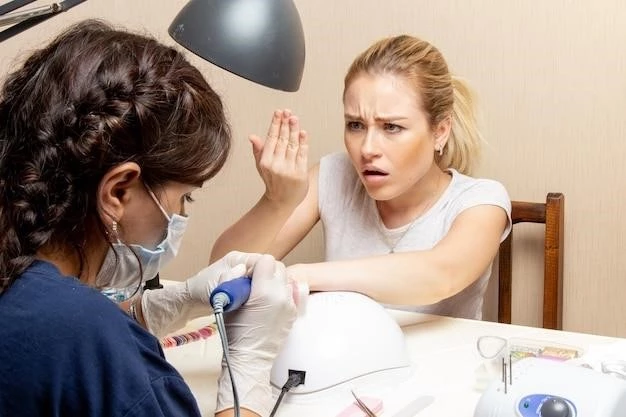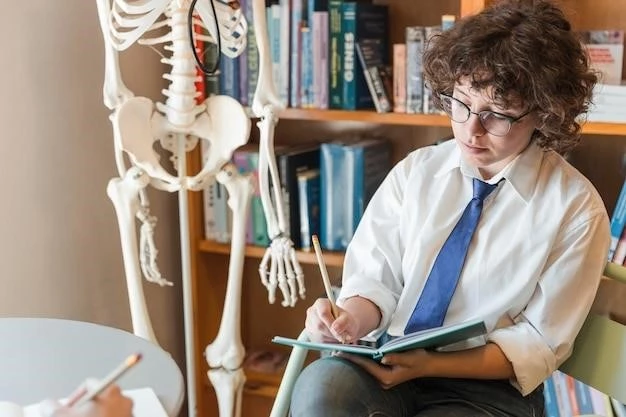Exostoses anetodermia brachydactyly type E
Exostoses anetodermia brachydactyly type E is a rare genetic disorder. Dermatologists study this condition that affects the skin, bone, fingers, and toes. The article will delve into understanding the mutations behind this syndrome and provide guidance on diagnosis and treatment.
Overview of the Condition
Exostoses anetodermia brachydactyly type E is a rare genetic disorder characterized by skin and bone abnormalities, affecting fingers and toes. This medical condition is caused by specific genetic mutations and is inherited within families. Dermatologists play a crucial role in diagnosing and treating this syndrome. Understanding the symptoms, genetic basis, and treatment options is essential for individuals affected by this rare condition. Seek medical advice if you suspect you have exostoses anetodermia brachydactyly type E to receive the appropriate care and support.
Understanding Exostoses
Exostoses are bony growths that develop on the surface of bones, commonly found in the fingers and toes. In the case of Exostoses anetodermia brachydactyly type E, these growths are linked to a genetic mutation, leading to various abnormalities in the affected areas. Understanding how exostoses form and the impact they can have on bone structure is crucial in managing this condition. Consult with dermatologists or medical specialists to learn more about the underlying mechanisms of exostoses and how they relate to the broader syndrome.
Anetodermia and Brachydactyly
Anetodermia refers to the loss of elastic tissue in the skin, leading to areas that appear wrinkled or sagging. Brachydactyly is a condition where individuals have unusually short fingers or toes. In Exostoses anetodermia brachydactyly type E, the presence of both anetodermia and brachydactyly alongside exostoses highlights the complex nature of this genetic syndrome. Understanding how these features manifest and impact individuals can aid in early detection and management of this rare disorder. Seek medical advice if you suspect you or a loved one may be presenting with symptoms related to anetodermia, brachydactyly, or exostoses.
Genetic Mutations and Inheritance
Exostoses anetodermia brachydactyly type E is caused by specific genetic mutations that result in the unique combination of exostoses, anetodermia, and brachydactyly. These mutations are inherited within families, following a specific pattern of genetic transmission; Understanding the genetic basis of this rare syndrome is crucial for diagnosis and targeted treatment. Genetic counseling can provide valuable insight into the inheritance patterns of this condition and help individuals make informed decisions regarding family planning and healthcare management. Consult with a genetics specialist to learn more about the genetic mutations associated with Exostoses anetodermia brachydactyly type E.

Common Symptoms
Common symptoms of Exostoses anetodermia brachydactyly type E include the presence of bony growths (exostoses) on the fingers and toes, anetodermia characterized by loose or wrinkled skin, and brachydactyly resulting in short fingers or toes. Individuals with this genetic syndrome may also experience discomfort or limited range of motion in the affected areas. Recognizing these symptoms early is key to prompt diagnosis and management. If you or a loved one exhibits these common symptoms, seek medical evaluation from a dermatologist or healthcare provider specializing in genetic conditions for a comprehensive assessment and personalized care plan.
Diagnosis Process
The diagnosis of Exostoses anetodermia brachydactyly type E typically involves a comprehensive medical evaluation, including a physical examination to assess the presence of bony growths (exostoses) on the fingers and toes, examination of the skin for signs of anetodermia, and evaluation of finger and toe length to identify brachydactyly. Dermatologists and genetic specialists may conduct genetic testing to confirm the specific mutations underlying this syndrome. Imaging studies such as X-rays or MRIs may also be used to assess bone structure and abnormalities. If you suspect you or a family member may have Exostoses anetodermia brachydactyly type E based on the observed symptoms, it is important to seek prompt medical attention for an accurate diagnosis and appropriate management plan.
Treatment Options
Treatment for Exostoses anetodermia brachydactyly type E focuses on managing symptoms and improving quality of life. While there is no cure for this genetic disorder, interventions can help address specific aspects of the condition. Orthopedic interventions may be recommended to address bony growths or skeletal abnormalities. Dermatological treatments can help manage skin issues such as anetodermia. Physical therapy and occupational therapy may be suggested to improve mobility and function in affected fingers and toes. Regular monitoring by healthcare professionals specializing in genetic disorders is essential to track progression and adjust treatment strategies as needed. Discuss with your healthcare team to explore personalized treatment options tailored to your unique needs and symptoms.
Living with Exostoses anetodermia brachydactyly type E
Living with Exostoses anetodermia brachydactyly type E can present challenges, but with the right support and management strategies, individuals can lead fulfilling lives. It is essential to prioritize regular medical check-ups to monitor the progression of symptoms and adjust treatment plans accordingly. Engaging in physical activities that do not exacerbate discomfort in the fingers or toes can help maintain mobility and flexibility. Connecting with support groups or seeking counseling services can provide emotional support and valuable resources for coping with the challenges of this rare genetic syndrome. Remember, you are not alone, and reaching out for assistance can help you navigate living with Exostoses anetodermia brachydactyly type E.
Research and Development
Ongoing research into Exostoses anetodermia brachydactyly type E is vital for advancing our understanding of this rare genetic disorder. Scientific studies focus on identifying new treatment approaches, exploring potential genetic therapies, and enhancing diagnostic techniques. Participating in clinical trials or research studies can contribute to the development of innovative therapies and improve outcomes for individuals with this condition. Stay informed about the latest advancements in the field of genetic disorders and consider engaging with healthcare professionals and research institutions to learn about opportunities to support and participate in research initiatives aimed at furthering our knowledge of Exostoses anetodermia brachydactyly type E.
Conclusion
In conclusion, Exostoses anetodermia brachydactyly type E is a rare genetic syndrome characterized by skin and bone abnormalities, along with specific genetic mutations; Understanding the symptoms, diagnosis process, treatment options, and research developments is crucial for individuals affected by this condition. By seeking medical advice, engaging in personalized treatment plans, and staying informed about research progress, individuals living with Exostoses anetodermia brachydactyly type E can effectively manage the challenges associated with this disorder. Remember, you are not alone in this journey, and with the right support, it is possible to lead a fulfilling life while navigating the complexities of this rare genetic syndrome.
